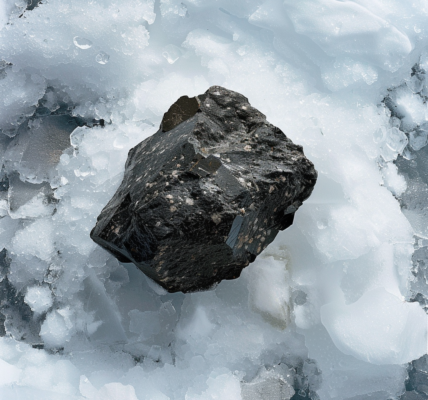We have always been fascinated by the mysteries of nature, and one such mystery that has puzzled scientists for a long time is the role of the common rock mineral feldspar in cloud formation. However, new research has finally shed light on this enigma.
Scientists from the Vienna University of Technology (TU Wein) in Austria have used a highly sensitive atomic force microscope to delve into the intricacies of feldspar. What they discovered was truly remarkable.
It has been known that feldspar, a mineral abundant in the Earth’s crust and found on other planets as well, has a natural affinity for water molecules, making it an ideal seed for cloud formation. As water molecules attach to feldspar dust in the atmosphere and begin to freeze, the foundation for cloud formation is laid.
However, the recent research uncovered a surprising revelation. The ultra-high resolution images obtained from the atomic force microscope unveiled a unique surface geometry of feldspar, attributed to the presence of minuscule pockets of water, known as inclusions. When the rock is split, a small amount of water vapor is released from these pockets and reattaches to the surface. This process leads to the formation of hydroxyl groups (OH) – crucial components that facilitate the strong attraction between water and feldspar.
Through computer simulations of the chemical reactions, the researchers were able to confirm the significance of these hydroxyl groups in the interaction between water and feldspar. This breakthrough not only unravels the long-standing mystery of how feldspar influences cloud formation but also provides valuable insights into the fundamental processes governing our atmosphere.
The findings from this study pave the way for a deeper understanding of the intricate mechanisms driving cloud formation and could have far-reaching implications for climate research and atmospheric science. As we continue to unravel the complexities of the natural world, each discovery brings us closer to comprehending the intricate web of interactions that shape our planet.





